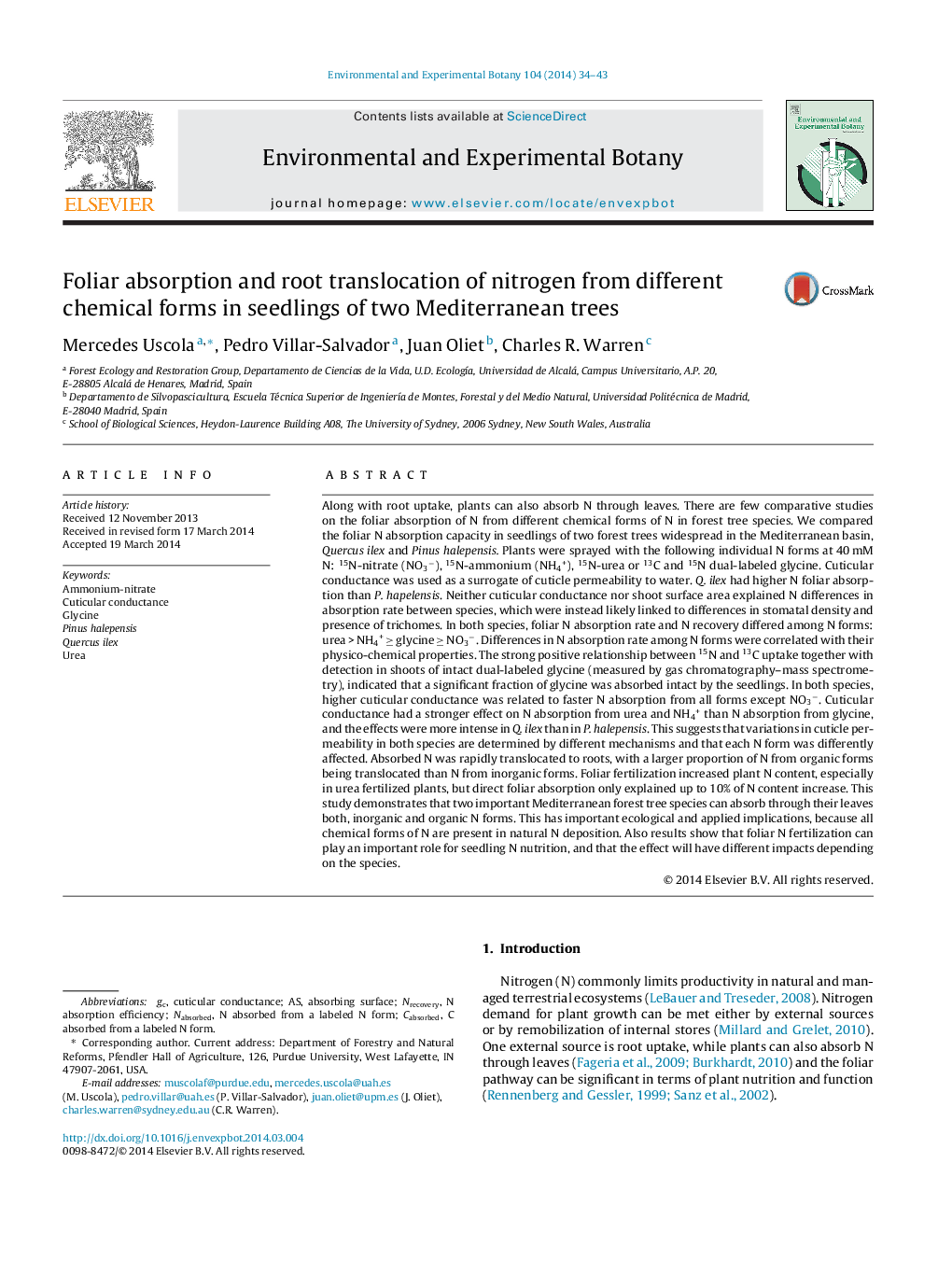| کد مقاله | کد نشریه | سال انتشار | مقاله انگلیسی | نسخه تمام متن |
|---|---|---|---|---|
| 4554426 | 1628073 | 2014 | 10 صفحه PDF | دانلود رایگان |
• Quercus ilex had higher N foliar absorption than Pinus halepensis.
• In both species, rates of foliar N absorption rates were: urea > NH4+ ≥ glycine ≥ NO3−.
• Cuticular conductance only explained intraspecific but not interspecific differences in N absorption rates.
• Absorbed N was rapidly translocated to roots, especially from organic N sources.
• Foliar fertilization increased plant N content by stimulating root uptake.
Along with root uptake, plants can also absorb N through leaves. There are few comparative studies on the foliar absorption of N from different chemical forms of N in forest tree species. We compared the foliar N absorption capacity in seedlings of two forest trees widespread in the Mediterranean basin, Quercus ilex and Pinus halepensis. Plants were sprayed with the following individual N forms at 40 mM N: 15N-nitrate (NO3−), 15N-ammonium (NH4+), 15N-urea or 13C and 15N dual-labeled glycine. Cuticular conductance was used as a surrogate of cuticle permeability to water. Q. ilex had higher N foliar absorption than P. hapelensis. Neither cuticular conductance nor shoot surface area explained N differences in absorption rate between species, which were instead likely linked to differences in stomatal density and presence of trichomes. In both species, foliar N absorption rate and N recovery differed among N forms: urea > NH4+ ≥ glycine ≥ NO3−. Differences in N absorption rate among N forms were correlated with their physico-chemical properties. The strong positive relationship between 15N and 13C uptake together with detection in shoots of intact dual-labeled glycine (measured by gas chromatography–mass spectrometry), indicated that a significant fraction of glycine was absorbed intact by the seedlings. In both species, higher cuticular conductance was related to faster N absorption from all forms except NO3−. Cuticular conductance had a stronger effect on N absorption from urea and NH4+ than N absorption from glycine, and the effects were more intense in Q. ilex than in P. halepensis. This suggests that variations in cuticle permeability in both species are determined by different mechanisms and that each N form was differently affected. Absorbed N was rapidly translocated to roots, with a larger proportion of N from organic forms being translocated than N from inorganic forms. Foliar fertilization increased plant N content, especially in urea fertilized plants, but direct foliar absorption only explained up to 10% of N content increase. This study demonstrates that two important Mediterranean forest tree species can absorb through their leaves both, inorganic and organic N forms. This has important ecological and applied implications, because all chemical forms of N are present in natural N deposition. Also results show that foliar N fertilization can play an important role for seedling N nutrition, and that the effect will have different impacts depending on the species.
Journal: Environmental and Experimental Botany - Volume 104, August 2014, Pages 34–43
